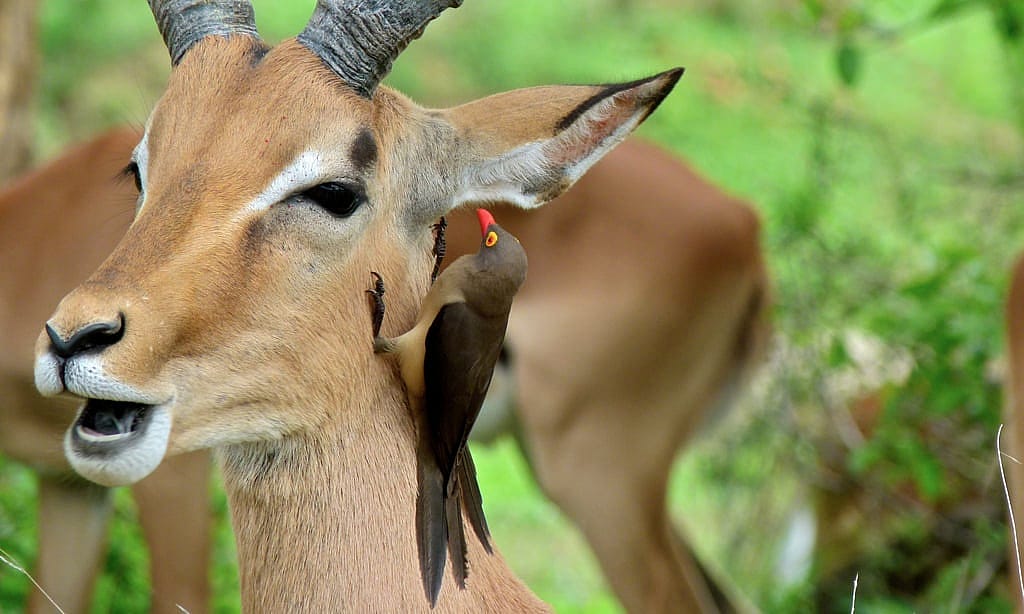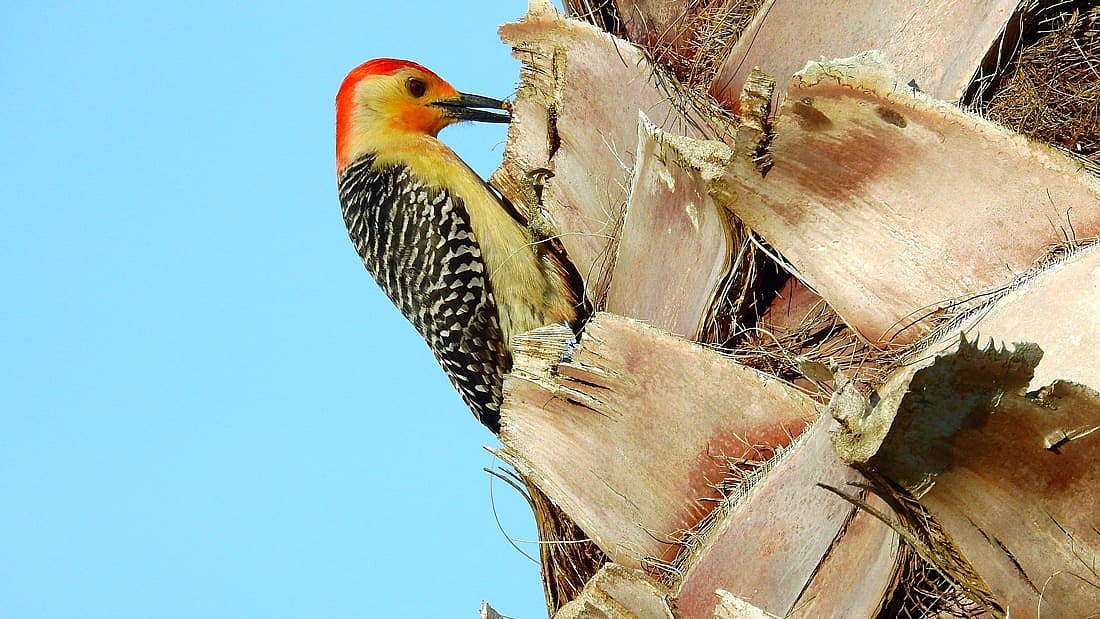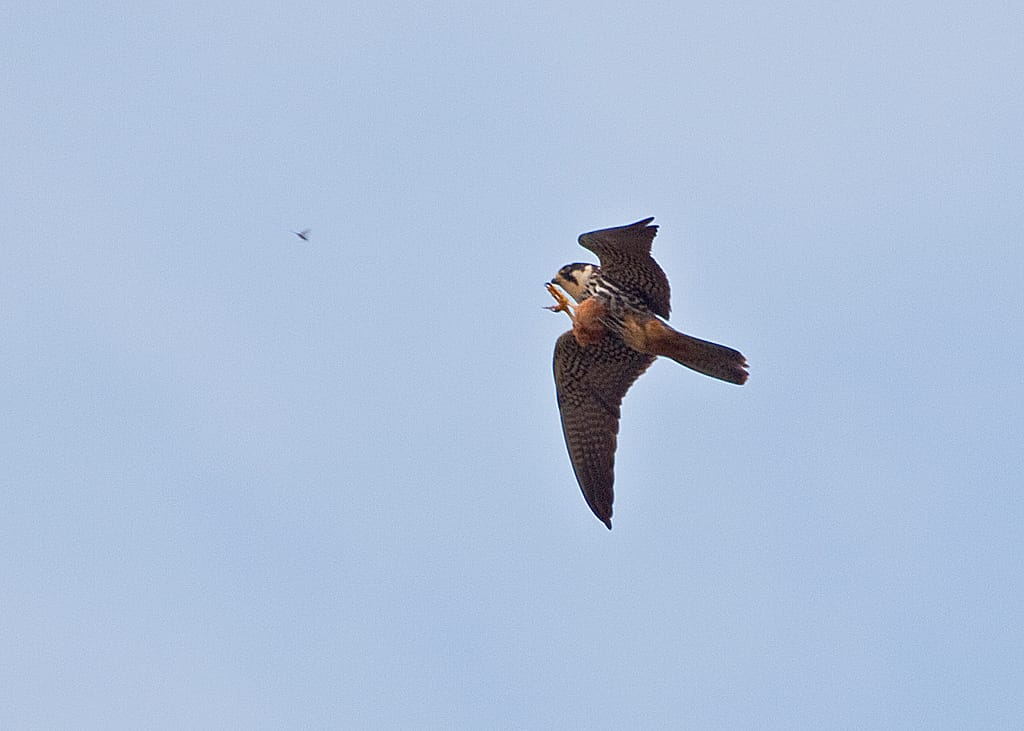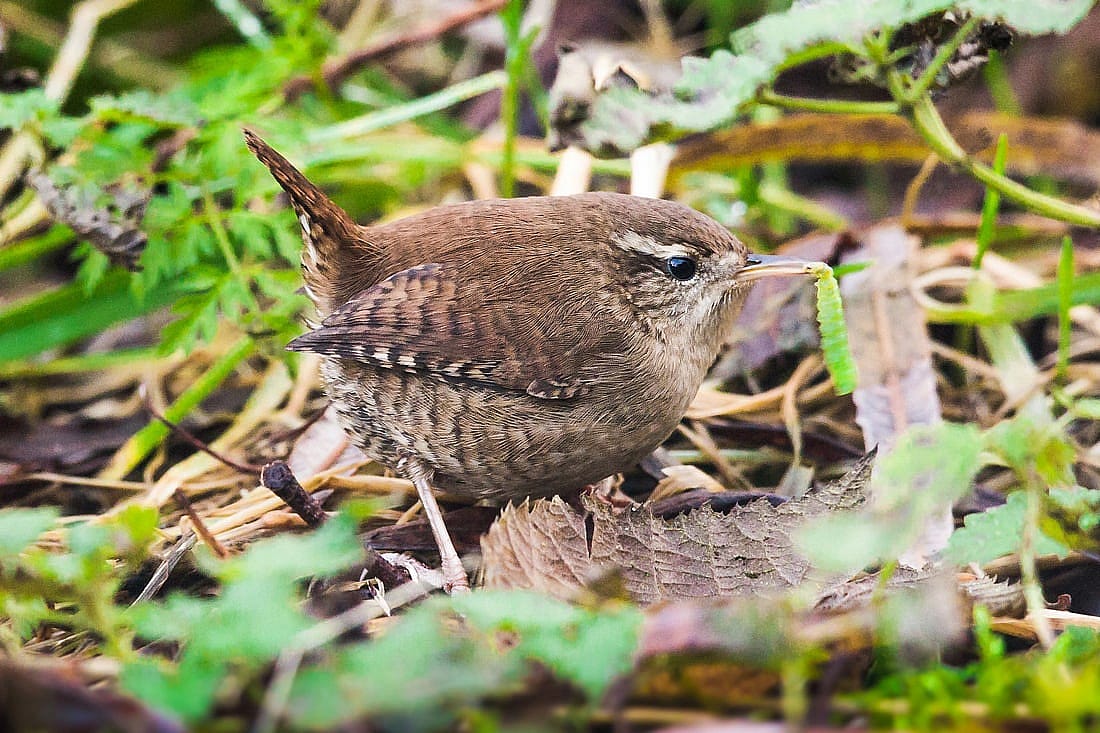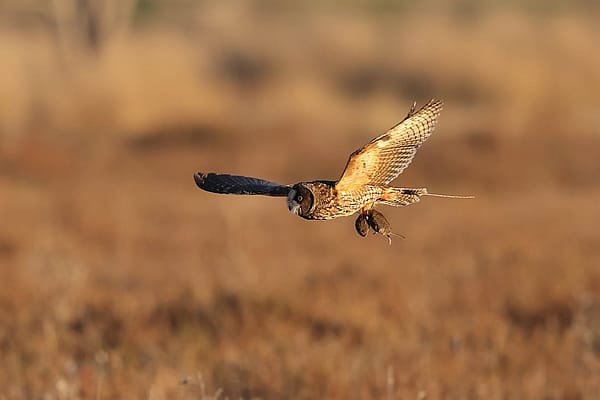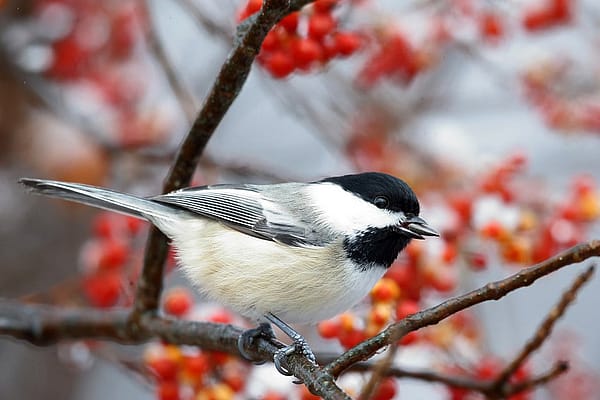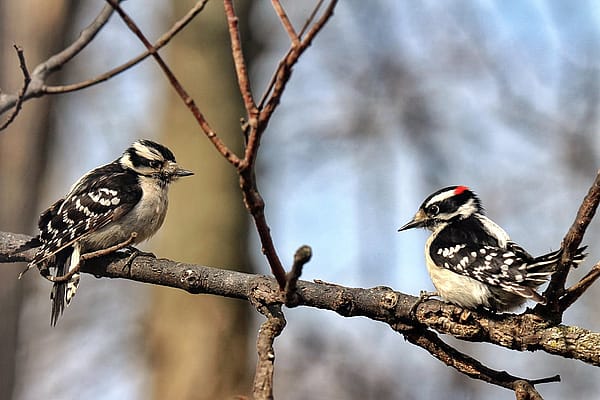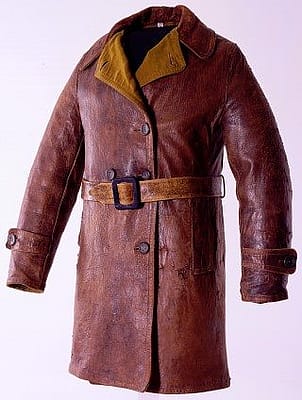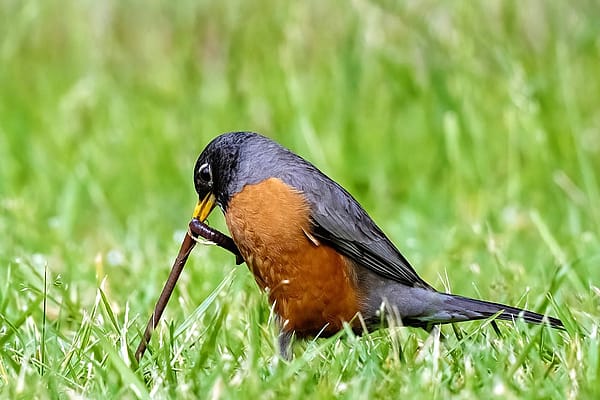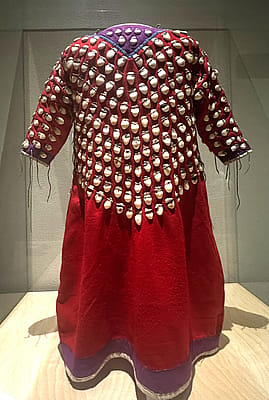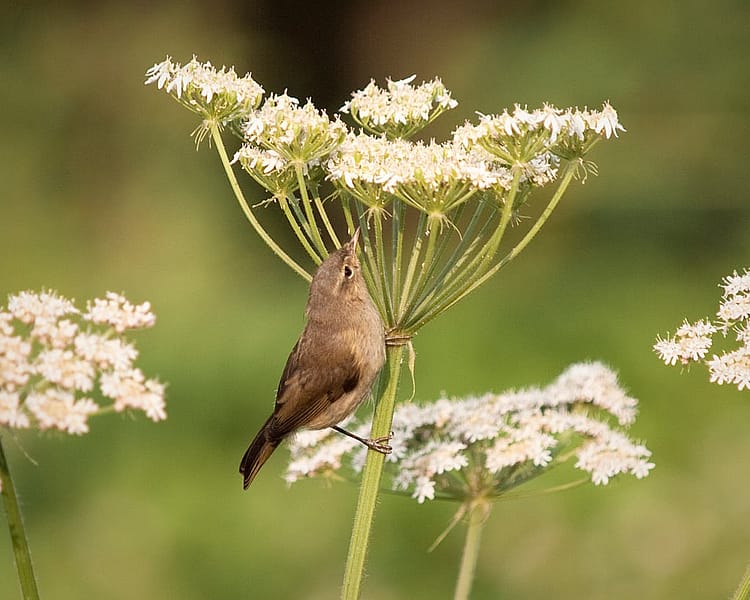
Hunting Methods of Insect Eating Birds
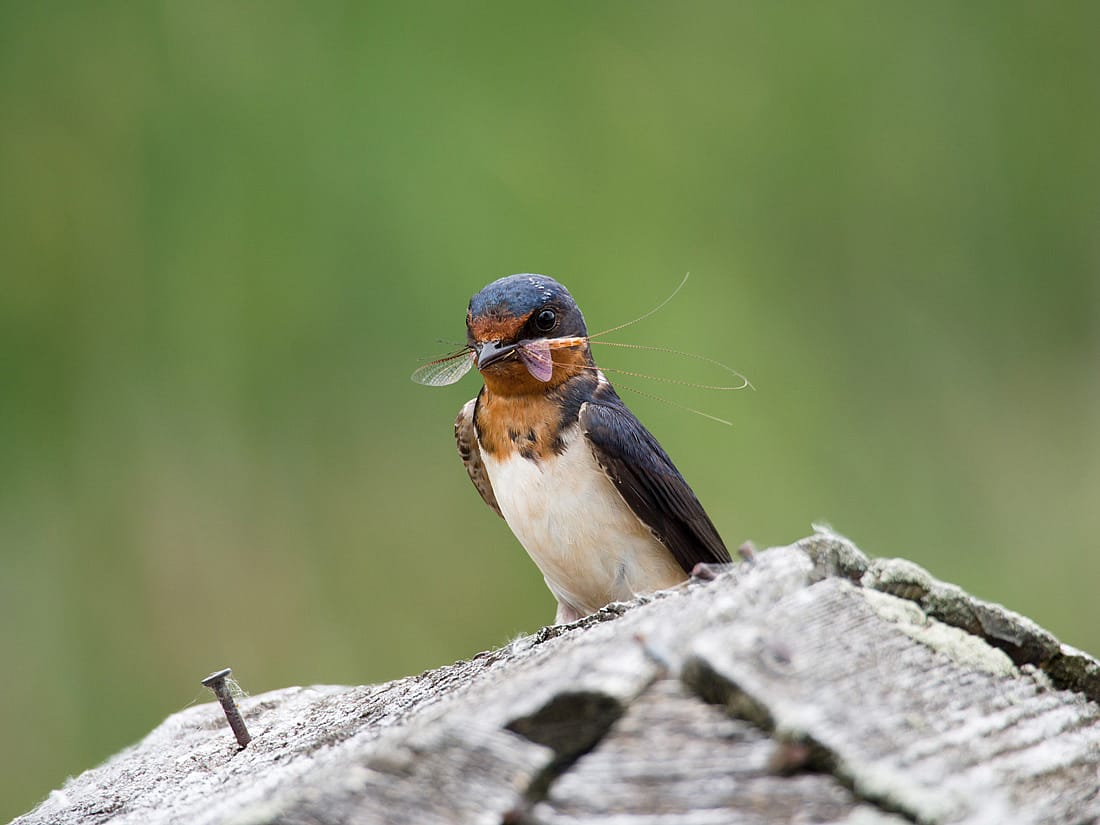
Insect Diets
Insects supplement or make up the major part of the diets of many birds from small perching birds to raptors. Here at the Draper Museum Raptor Experience (https://centerofthewest.org/explore/greater-yellowstone-natural-history/raptor-experience) we care for 11 non-releasable birds. Of these, insects make up a major or minor portion of 7 of our species’ diets. Swainson’s Hawks eat mainly mammals during breeding season, but almost exclusively feed on insects for the remainder of the year. American Kestrels eat a lot of insects and other invertebrates, as well as small rodents, and sometimes, though less often, small birds. Our Eastern Screech-owl has a varied diet, including insects. Though not a major part of their diet, our Saw-whet Owl, Short-eared Owl, Red-tailed Hawk, and even our Peregrine Falcon may occasionally supplement their diets with insects.Major Methods Used When Birds Hunt Insects
Three Main Methods of Hunting
1. Gleaning
Gleaning is a style of foraging in which birds pick bugs off of rocks, leaves, flowers, tree trunks and branches, as well as the ground. As they search for insects, gleaners may be seen darting in and out of vegetation, hovering, hopping, or even hanging upside down while exploring the underside of leaves. Ground hunters such as sparrows, grouse, quail, and towhees may use one or both feet to scratch through debris or soil on the ground.
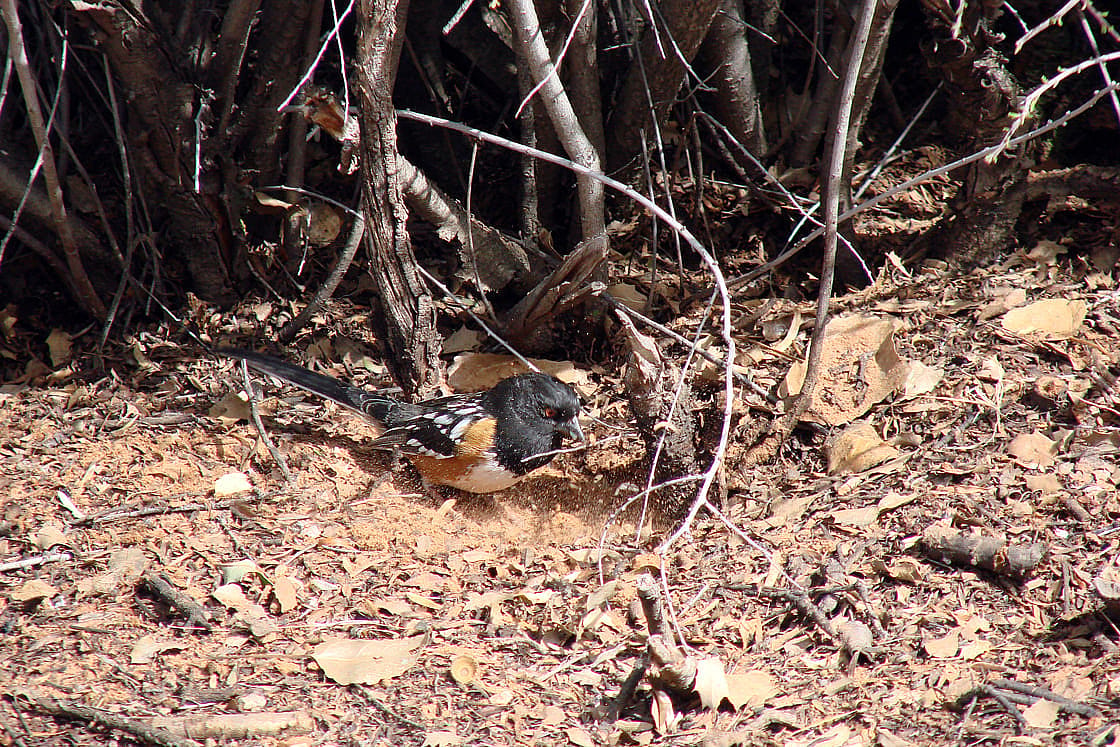
Black-capped Chickadees are known to find caterpillars by searching for leaves that have been damaged by caterpillars. If larva is discovered, Chickadees may be seen hanging upside down by one foot while pecking at the larva which they hold in their other foot. Birds such as the Oxpecker of Africa will glean insects from ungulates. You may spot birds such as sparrows hanging out around parking lots. Often these are gleaners who have learned that freshly killed insects may be found on license plates, radiators, and grilles of vehicles parked there. Other birds have discovered they can find insects by following in the footsteps of cattle and other animals. Birds such as American Kestrels may take advantage of tractors dislodging insects as farmers work their fields.
2. Probing
Probers are birds that search for a meal by poking their beaks into crevices or beneath the ground’s surface to find a meal. The Brown Creeper of North America is one such bird. Using its sharp, down-curved bill it works its way up tree trunks searching under and around the bark for insect larvae or eggs, as well as other small invertebrates. Creepers, nuthatches, and woodpeckers can use their spiky tail feathers to help them as they move around tree trunks while searching for a meal. Woodpeckers probe by sticking their beaks deep into crevices. Some woodpeckers are able to extend their tongs out four times the length of their beaks. These tongues may even be sticky to aid the woodpecker while probing. Typically, nuthatches will begin near the top of trees and work their way down, while woodpeckers will do the opposite.
Listen to this 1:42 minute BirdNote “There’s More Than One Way to Climb a Tree”
https://www.birdnote.org/show/theres-more-one-way-climb-tree
Shorebirds can be seen probing into the mud and sand for invertebrates, including insect larva and worms. A Long-billed Curlew can probe 8 inches into the sand. American Avocets, with their long, up-curved bills, will sweep their beaks side to side through the water or silt looking for prey. Other birds may use their bills to extract insects from within flowers. In some cases this may even help to pollinate the flowers.
3. Hawking and Sallying
Hawkers and Sallyers are birds that snatch insects from mid air. Hawking birds eat the insects in the air, then continue hunting. Sallying birds catch the insects in the air then return to a perch to feed. If the catch is large, the Sallyer may sometimes even whack the prey on its perch to kill it. Birds such as flycatchers may reach out and snap up insects with their beaks, while other birds may grab them with their feet.
According to the book Falcons of North America by Kate Davis, “Insects are sometimes “hawked” (caught) in the air, and Peregrines have been seen catching dozens of salmon flies with their feet and transferring them to their mouths in flight. One female caught 23 salmon flies in just a few minutes with no misses!” American Kestrels may catch Dragon Flies on the wing, then while still in flight rip off the wings and consume the body. Swifts, another insect-eater, can hunt as high as 3,000 feet, and may bring as many as 5,000 insects to their nestlings each day. You may have observed swallows hawking in the air. These swift, agile birds may also swoop down and pick a meal off the surface of the water or from the ground while still in flight. Nighthawks are another common example of birds that hawk. (https://centerofthewest.org/2016/01/25/nighthawks-hawks-in-name-only) Nighthawks have huge sticky mouths which they open to scoop up insects out of the air. These birds are capable of catching a few thousand insects in one evening.
Birds Can be helpful to Us, We Can be Helpful to Birds
Pest insects such as mosquitoes and those that damage gardens, crops, and other vegetation are often preyed upon by various bird species. As a result, insect-eaters are beneficial to humans by helping to keep insect populations down.
For a list of 11 helpful insect-eating birds, check out this webpage: https://www.regenerative.com/magazine/eleven-beneficial-insect-eating-birds
This short video will explain how to help out insect-eating birds during the winter months: http://www.cornell.edu/video/attracting-wild-birds-5-insect-eating-birds
Photo Credits:
Barn Swallow with mayfly by I Have Some Egrets, Attribution-NonCommercial-NoDerivs 2.0 Generic License
Chiffchaff insect hunting by Kentish Plumber, Attribution-NonCommercial-NoDerivs 2.0 Generic License
Spotted Towhee gleaning the ground cover by author, Anne Hay, Attribution-NoDerivs 2.o Generic License, https://www.flickr.com/photos/157982666@N07
Red-billed Oxpecker by Bernard Dupont, Attribution-shareAlike 2.0 Generic license
Red-bellied Woodpecker hunting insects, by Jim Mullhaupt, Attribution-NonCommercial-NoDerivs 2.0 Generic License
Hobby by Kentish Plumber, Attribution-NonCommercial-NoDerivs 2.0 Generic License
Wren foraging for a meal, by scyrene, Attribution-NonCommercial-NoDerivs 2.0 Generic License
Written By
Anne Hay
Anne Hay has a Bachelor's degree in Elementary Education and a Master's in Computers in Education. She spent most of her working years teaching third grade at Livingston School in Cody, Wyoming. After retiring she began doing a variety of volunteer work for the Buffalo Bill Center of the West’s Draper Natural History Museum. Anne loves nature and has a concern for the environment. She believes that educating the public, so that they will have a better understanding and appreciation for the natural world, is very important. Because of this belief, volunteering at the Center is a perfect fit. She spends time in the Draper Lab, observing eagle nests for Dr. Charles Preston’s long-term research project on nesting golden eagles, writing observation reports of raptor sightings in the Bighorn Basin, and working with the Draper Museum Raptor Experience. Anne states that, “Having a bird on my glove, is one of my all time favorite things in life.”

